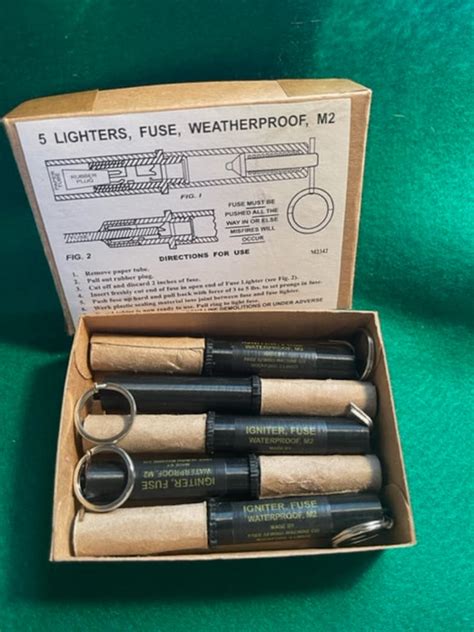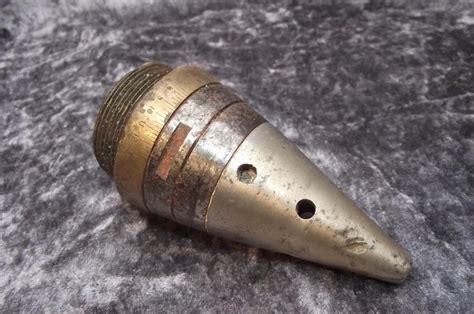electric fuse box ww2 • Allied technological cooperation during World War II• Artillery fuze• Guidance system• Guided bomb• Precision bombing See more Get fast turnaround on quotes for custom mechanical components, including prototyping and production parts. WM Berg is US-based, allowing us to respond to requests for nonstandard and special parts quickly. Our world-class manufacturing facility includes a CNC/DNC machine shop, R&D lab and stringent quality assurance.
0 · wwii crush fuse
1 · ww2 impact fuses
2 · timed fuse ww2
3 · revolutionary fuse of ww2
4 · german proximity fuze ww2
5 · german fuze ww2
6 · fuses that won ww2
7 · fuse ww2
Online factory inspection; Explore Xavier-parts CNC Machining Service Range. With hundreds of CNC machines across our three factories, our unparalleled production capabilities ensure your parts are shipped on time, every time. . Our production services can help you achieve the tightest tolerances required for non-standard custom CNC machined .
The proximity fuze was one of the most important technological innovations of World War II. It was so important that it was a secret guarded to a similar level as the atom bomb project or D-Day invasion. See more

metal arc fabrication cambridge md
A proximity fuze (also VT fuze or "variable time fuze") is a fuze that detonates an explosive device automatically when it approaches within a certain distance of its target. Proximity fuzes are designed for elusive military . See moreBefore the invention of the proximity fuze, detonation was induced by direct contact, a timer set at launch, or an altimeter. All of these earlier methods have disadvantages. The . See moreRadioRadio frequency sensing (radar) is the main sensing principle for artillery shells.The device described . See more

wwii crush fuse
• Allied technological cooperation during World War II• Artillery fuze• Guidance system• Guided bomb• Precision bombing See moreThe idea of a proximity fuse had long been considered militarily useful. Several ideas had been considered, including optical systems that shone a . See more
• 120 mm HE mortar shell fitted with proximity fuze• 120 mm HE mortar shell fitted with M734 proximity fuze• 60 . See more• Baldwin, Ralph B. (1980), The Deadly Fuze: The Secret Weapon of World War II, San Rafael, CA: Presidio Press, ISBN 978-0-89141-087-4. . See more By war’s end an army of workers had assembled and installed more than 22 million innovative fuzes of the type—each containing about 130 miniaturized electronic parts––at a . The British and the US had been working on ruggedising vacuum tubes for a radio proximity fuse from 1939 and 1940, respectively. The US devoted far more resources into it .
ww2 impact fuses
timed fuse ww2
Before World War II, there were two broad categories of fuses: impact and timed. Impact fuses, sometimes known as crush fuses, go off .

The proximity fuzes developed in World War II markedly increased the effectiveness of artillery by triggering the explosion of the shell by its proximity to the target. This was accomplished by including a tiny radar-like radio sender .
This is the story of the proximity fuse, one of the best-kept secrets of World War 2 and regarded by some as the 3 rd most important technological development after the Atomic bomb and Radar. This is they worked and how .
Use of the proximity fuse in the Battle of the Bulge marked a final milestone in one of the most extraordinary scientific efforts of the war, rivaling that of the atomic bomb. Like the Manhattan Project, it involved teams of scientists struggling to .Holmes’ book brings to the fore the role of the proximity fuse in defeating the first of the Nazi superweapons to surface: the V-1 “buzz bomb.” One of the coolest artifacts in the collection of The National WWII Museum is the proximity fuse. This device that sat on the nose of rockets held sophisticated electronics and .Anti-aircraft and anti-ground proximity fuses were code named variable time fuses in WWII because their technology was classified. There is a great Navy documentary that describes .
The proximity fuze was one of the most important technological innovations of World War II. It was so important that it was a secret guarded to a similar level as the atom bomb project or D-Day invasion. By war’s end an army of workers had assembled and installed more than 22 million innovative fuzes of the type—each containing about 130 miniaturized electronic parts––at a cost of over billion in 1940s dollars (roughly billion today).
The British and the US had been working on ruggedising vacuum tubes for a radio proximity fuse from 1939 and 1940, respectively. The US devoted far more resources into it and had a workable fuse in the form of the Mk 32 by early 1942. Work on a photo-electric fuse was abandoned when the solution to the VT fuse was found. Before World War II, there were two broad categories of fuses: impact and timed. Impact fuses, sometimes known as crush fuses, go off when they impact something. A split-second later, this sets off the main explosives in the shell and .
The proximity fuzes developed in World War II markedly increased the effectiveness of artillery by triggering the explosion of the shell by its proximity to the target. This was accomplished by including a tiny radar-like radio sender-receiver in the fuze. This is the story of the proximity fuse, one of the best-kept secrets of World War 2 and regarded by some as the 3 rd most important technological development after the Atomic bomb and Radar. This is they worked and how this simple principle changed the .Use of the proximity fuse in the Battle of the Bulge marked a final milestone in one of the most extraordinary scientific efforts of the war, rivaling that of the atomic bomb. Like the Manhattan Project, it involved teams of scientists struggling to overcome technical and physical obstacles in absolute secrecy.
Holmes’ book brings to the fore the role of the proximity fuse in defeating the first of the Nazi superweapons to surface: the V-1 “buzz bomb.”
revolutionary fuse of ww2
One of the coolest artifacts in the collection of The National WWII Museum is the proximity fuse. This device that sat on the nose of rockets held sophisticated electronics and radar all packed inside. It was manufactured in a factory that had formerly made Christmas lights.Anti-aircraft and anti-ground proximity fuses were code named variable time fuses in WWII because their technology was classified. There is a great Navy documentary that describes how this RF based proximity fuse works.The proximity fuze was one of the most important technological innovations of World War II. It was so important that it was a secret guarded to a similar level as the atom bomb project or D-Day invasion. By war’s end an army of workers had assembled and installed more than 22 million innovative fuzes of the type—each containing about 130 miniaturized electronic parts––at a cost of over billion in 1940s dollars (roughly billion today).
The British and the US had been working on ruggedising vacuum tubes for a radio proximity fuse from 1939 and 1940, respectively. The US devoted far more resources into it and had a workable fuse in the form of the Mk 32 by early 1942. Work on a photo-electric fuse was abandoned when the solution to the VT fuse was found.
Before World War II, there were two broad categories of fuses: impact and timed. Impact fuses, sometimes known as crush fuses, go off when they impact something. A split-second later, this sets off the main explosives in the shell and .The proximity fuzes developed in World War II markedly increased the effectiveness of artillery by triggering the explosion of the shell by its proximity to the target. This was accomplished by including a tiny radar-like radio sender-receiver in the fuze. This is the story of the proximity fuse, one of the best-kept secrets of World War 2 and regarded by some as the 3 rd most important technological development after the Atomic bomb and Radar. This is they worked and how this simple principle changed the .
Use of the proximity fuse in the Battle of the Bulge marked a final milestone in one of the most extraordinary scientific efforts of the war, rivaling that of the atomic bomb. Like the Manhattan Project, it involved teams of scientists struggling to overcome technical and physical obstacles in absolute secrecy.Holmes’ book brings to the fore the role of the proximity fuse in defeating the first of the Nazi superweapons to surface: the V-1 “buzz bomb.” One of the coolest artifacts in the collection of The National WWII Museum is the proximity fuse. This device that sat on the nose of rockets held sophisticated electronics and radar all packed inside. It was manufactured in a factory that had formerly made Christmas lights.
german proximity fuze ww2
As one of the leading aluminum die cast enclosure metal junction box manufacturers and suppliers in China, we warmly welcome you to wholesale aluminum die cast enclosure metal junction box made in China here from our factory. All customized products are with high quality and competitive price.
electric fuse box ww2|timed fuse ww2